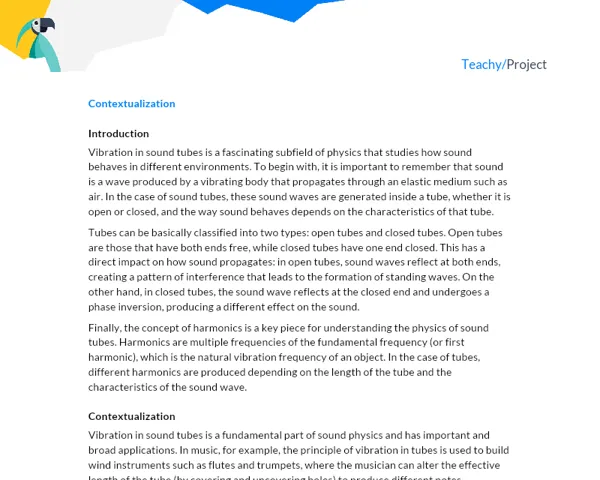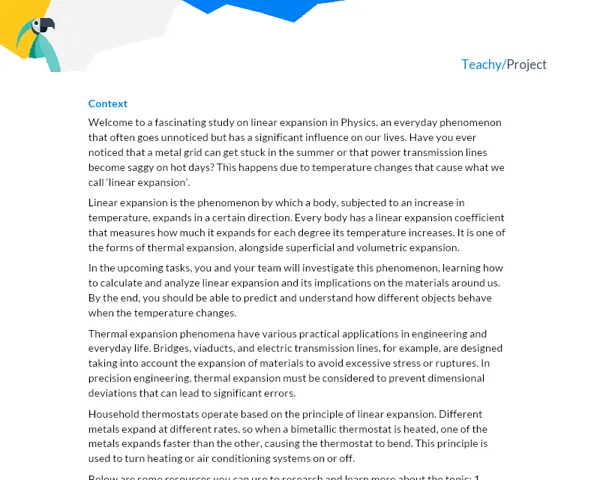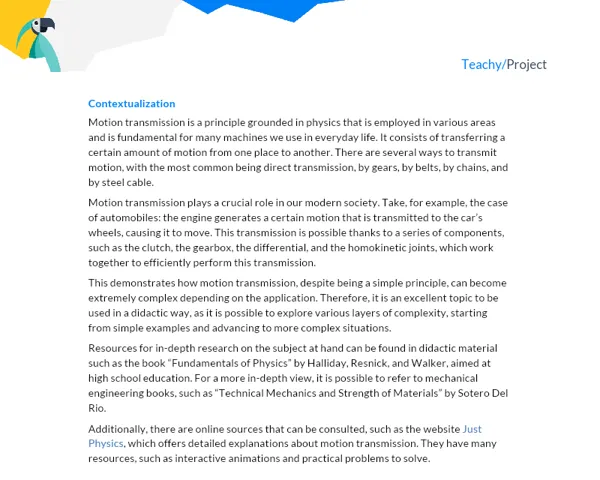Contextualization
Theoretical Introduction
Vectors are one of the most used tools in physics to describe quantities that have both magnitude and direction, such as force, velocity, and acceleration. Motivated by the study of motion and forces, you will learn that vectors are represented by arrows. The direction of the arrow gives the direction of the vector quantity, and the length of the arrow corresponds to the magnitude of the vector quantity.
To add or subtract vectors, we use a method called the parallelogram rule. This method is useful for solving problems where two or more different forces act at a point. The combination of these forces results in a resultant force that can be calculated through vector addition.
Finally, we will learn that every vector quantity can be decomposed into components, which are the vectors that when added result in the original vector. This is extremely useful for solving problems where forces act in different directions.
Contextualization
Vectors are vital in many fields of science and engineering. In physics, for example, vectors are used to describe forces, motions, electric and magnetic fields, and so on. In engineering, vectors are essential tools for designing and analyzing structures, while in computer science, vectors are used in 3D graphics and artificial intelligence.
But make no mistake, vectors are also found in our daily lives. When programming a route in GPS, playing video games, analyzing an athlete's performance, or even deciding the best way to drag a heavy box, we are using vector theory.
Now let's deepen our knowledge about vectors through practical and playful activities!
Practical Activity
Activity Title: "Vectors in Real Life"
Project Objective
In this project, students will apply theoretical concepts of vectors in real-life situations, enhancing their theoretical and practical understanding of the topic. Students will also develop teamwork, time management, and effective communication skills.
Detailed Project Description
Students will be divided into groups of 3 to 5 members. Each group will be responsible for choosing a real-life situation where vectors are present. They will illustrate this situation using vectors and explain how vectors apply to that situation.
To do this, groups must identify and describe at least four key vector concepts in their chosen situations: the definition of a vector, the graphical representation of a vector, vector addition, and vector decomposition into components.
In addition, groups must identify how other school subjects connect with the vector theme. For example, mathematics is involved in vector manipulation and geography may be involved in using vectors to describe trajectories.
Required Materials
- Computer with internet access
- Drawing software (such as Google Drawings or Microsoft Paint)
- Research tools
- Pens, pencils, and paper for notes
Detailed Step-by-Step for Activity Execution
- Choosing the Situation: The group must choose a daily life situation where vectors are present. This can range from a car's trajectory to a soccer ball's shot.
- Research and Study: The group must study vector theory focusing on the four main concepts mentioned. They must understand the theory behind vectors and how they apply to the chosen situation.
- Drawing Vectors: Using drawing software, the group must graphically represent the vectors identified in the chosen situation. They must pay attention to the characteristics of each vector, such as magnitude, direction, and sense.
- Report: The group must write a detailed report explaining the chosen situation, the identified vectors, and how vectors apply to the situation. They must also discuss how other school subjects are involved.
Project Deliverables and Document Template
Groups must deliver, at the end of the project, a written report in the form of a document containing the following parts:
- Introduction: In this part, the group must contextualize the theme, explain the relevance of vectors in the chosen situation, the application of vectors in the real world, and the objective of this project.
- Development: Here, the group must dissect the four main vector concepts and apply them to the chosen situation. They should explain in detail, with theoretical basis, how vectors apply to the chosen situation. They should also present the graphic drawing of the vectors and discuss the results obtained.
- Conclusions: In this section, the group must recap the main points of the project, explaining the learnings obtained and the conclusions about vectors in the chosen situation.
- Bibliography: Finally, the groups must indicate all sources used to work on the project, including books, websites, videos, etc.
Groups must also attach the graphic drawing of the vectors to the report.



